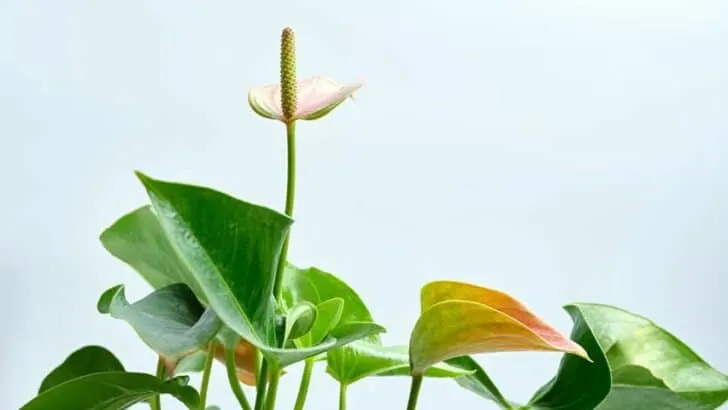In this article, I will discuss the reasons for Anthurium root rot. Root rot in Anthurium plants is quite common and is caused by improper care.
By identifying the signs of root rot correctly, you may be able to save your houseplant and achieve a healthy root system. Indoor plants signal through their leaves whether they are healthy or not.
Unhealthy plants will develop brown and yellow foliage. Yellow leaves are a common sign of overwatering. Root rot is closely attached to overwatering.
Table of Contents
Signs of Anthurium Root Rot
The most common root rot signs in Anthurium plants are yellow leaves. Brown and mushy roots and a foul smell are also caused by root rot. Bacteria will develop, and roots will start to rot if the soil’s wet for too long. Rotting roots are brown and mushy. If you touch them, they will fall apart.
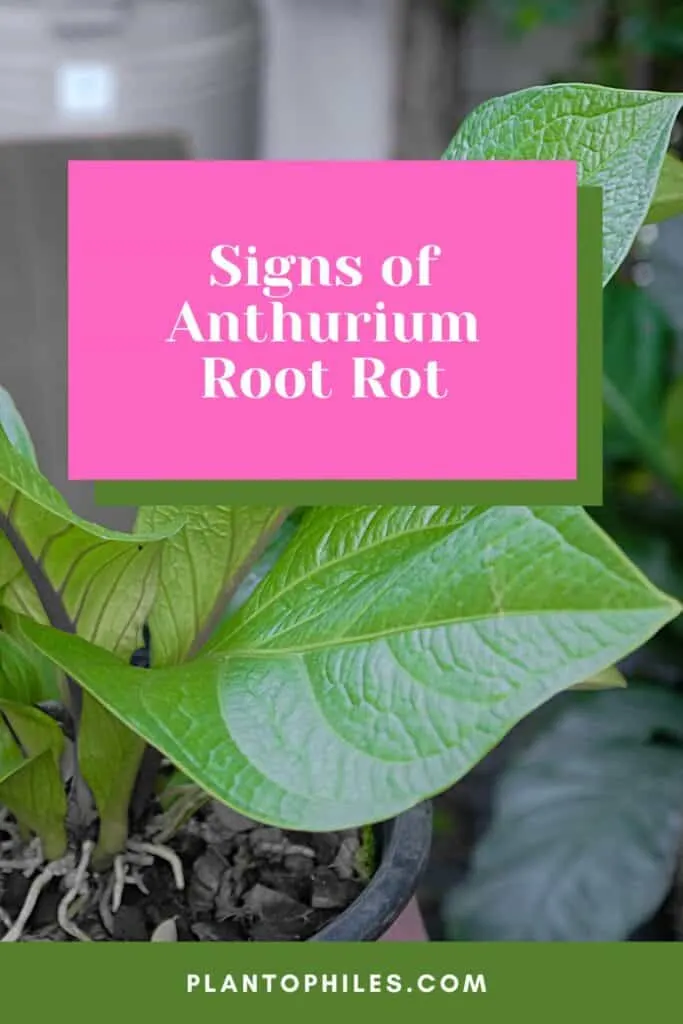
Brown and Mushy Roots
The clearest indication of root rot is brown and mushy roots. You can only spot them by taking your plant out of its pot. Remove some dirt from the roots, and inspect them.
If they are brown and mushy, you most certainly have rotted. You can also try to squeeze the roots a little bit. If they fall apart and are mushy to the touch, you are dealing with root rot.
The best thing you can do if you have root rot is to cut off the mushy roots and then wash all the roots with clear water.
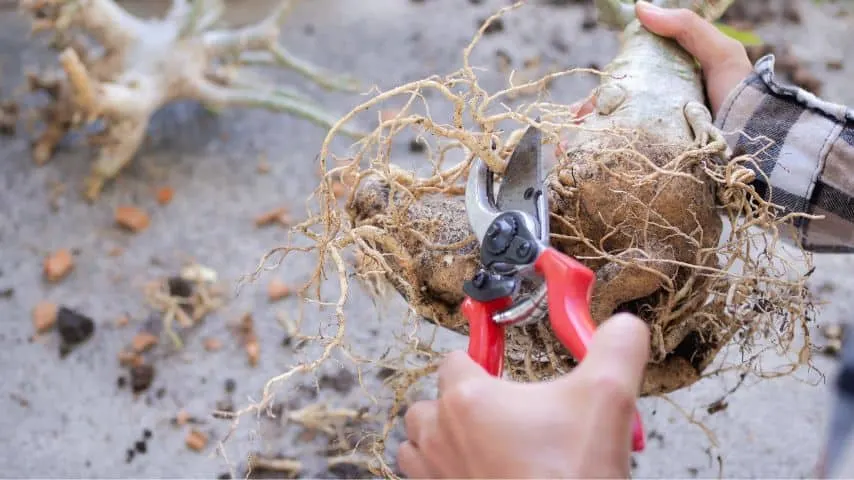
After you wash the roots, you must disinfect the pot and exchange the potting soil.
Once the pot is disinfected, add the plant back into the pot and add some fresh potting mix.

Act fast if you have root rot because the bacteria can go over onto the healthy roots. The healthy roots will be infected as well.
You might lose your whole plant if almost all of the roots have root rot. Plants need roots to take in nutrients and also water.
In this condition, watering will no longer help to hydrate the plant but damage it further, based on my observations.
11 Signs of Anthurium Root Rot (Root Rot in Anthuriums)
1. Bad Smell on the Plant
Rooting Roots, as well as rotting stems and leaves, will emit a bad smell. A bad smell on plants is a good indication that something is wrong. Whenever you smell a bad smell, you have to act fast.
Touch the soil and make sure that it is not wet and soggy.
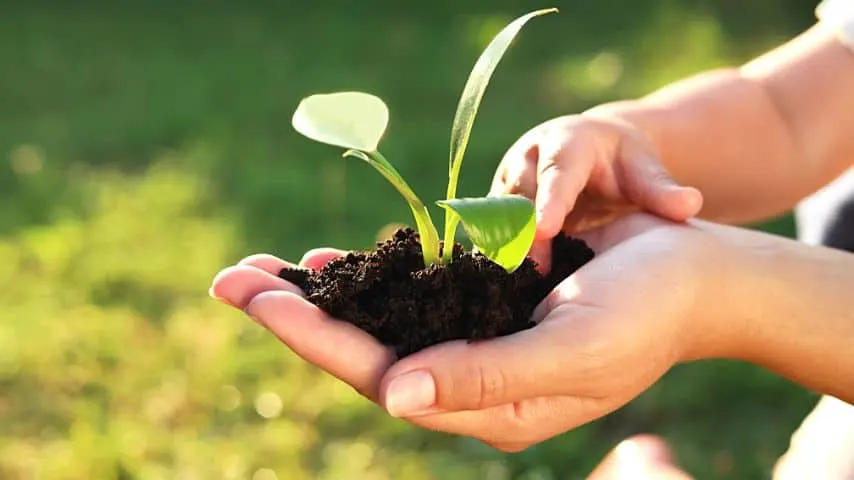
Take your plant out of its pot for some root inspection. You risk root rot whenever the soil is wet and soggy for a prolonged time. Usually, the soil needs to dry considerably within a day or two max.
2. Smelly Soil
If you wet the soil too much and it gets soggy, it will start to smell.
If the soil is smelling bad and plant pests such as fungus gnats are starting to appear, you are overwatering.
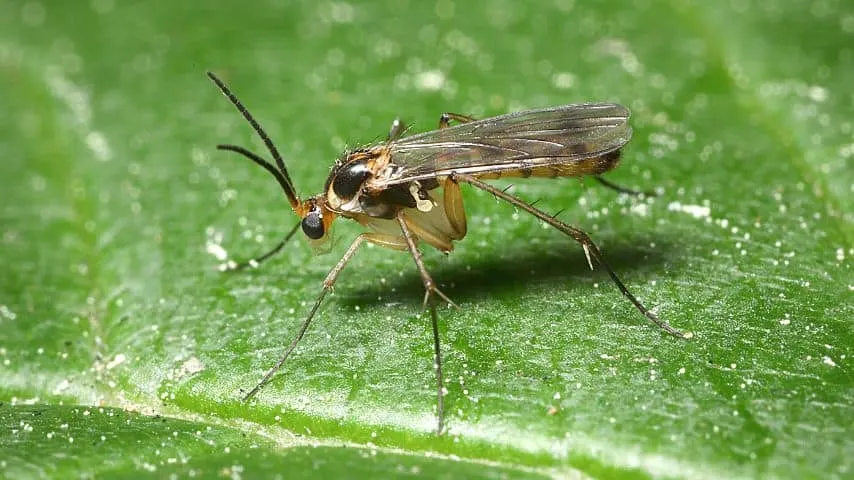
3. Pests (Fungus Gnats)
Fungus gnats are small flying insects looking like small flies. They love drenched soil and will start colonizing your pots and soil when it stays wet.
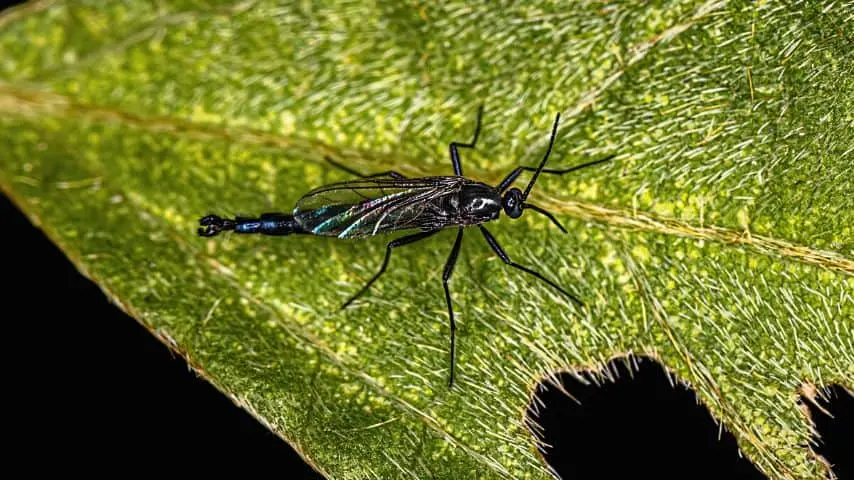
This indicates that you are overwatering and should go easy with the watering.
4. Curling/Discoloration in Leaves
Leaves are a mirror of the plant’s health. Its leaves will either get brown or yellow whenever your plant is unhealthy. They can also curl upwards, curl inwards or curl downwards. Leaves can also get dry and crispy.
Anthuriums that have root rot will most likely get foliage that turns yellow. Check the plant’s roots when you have yellow leaves by taking them out of their pot.

5. Yellowing Leaves
Yellow leaves are the most common symptom of over-watering. Whenever you have yellow leaves, chances are also that you have root rot.
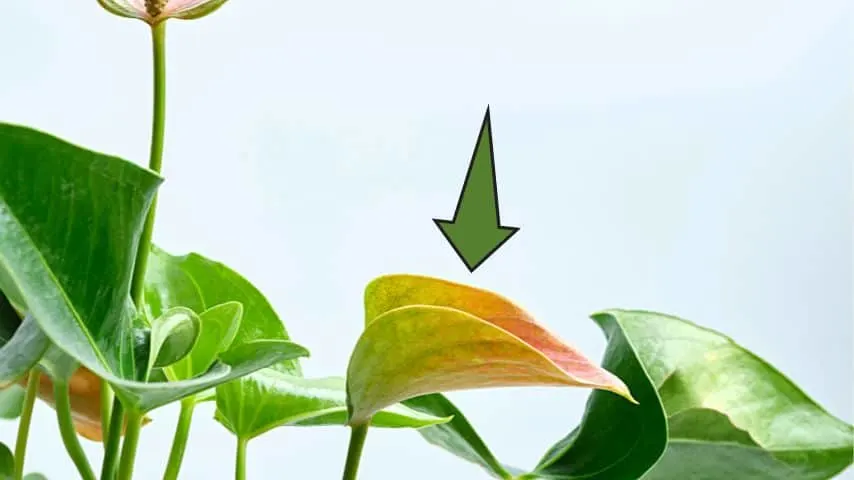
6. Brown Leaves and Leaf Tips
Brown leaves and brown leaf tips are usually a sign of underwatering. Leaves that turn brown can also be a sign of over-watering.
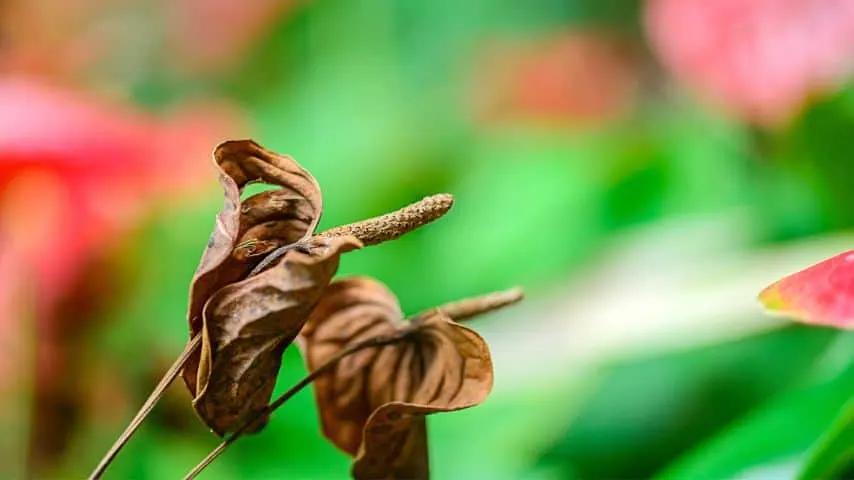
Overwatering is connected to root rot. Usually, when the soil is wet for a long time, root rot starts to develop.
7. Stunted Growth
Stunted growth is a clear sign in plants that something is wrong. Your plant care is most likely not on point. The growth will stunt when your plant’s roots cannot absorb nutrients or water.

Your plant will grow slower. The growth can also stop all together.
8. No New Leaves
If no leaves develop within 3-4 weeks, you are not in autumn and winter. This indicates that your plant’s experiencing an issue.
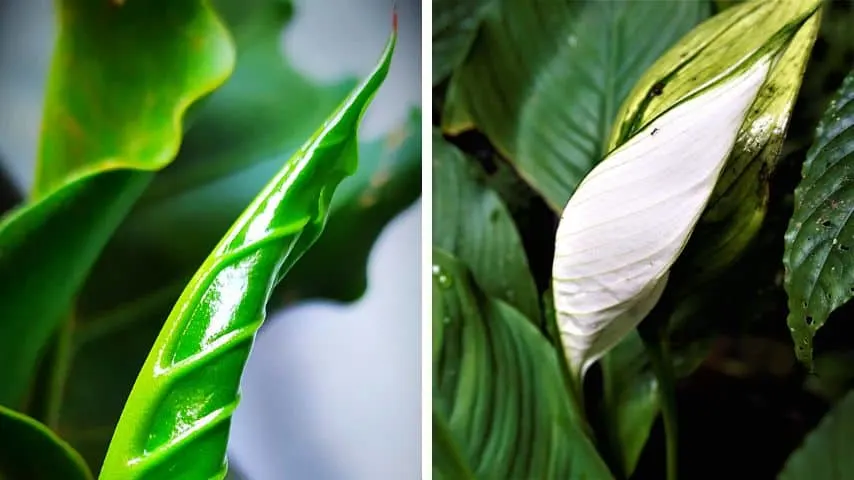
Anthurium leaves should develop almost constantly on Anthuriums such as the Painter’s palette.
9. Soft Mushy Stem
Whenever the stem of your Laceleaf plant gets soft and mushy, you are in trouble. Because a mushy stem in plants always means that something is not right.
When the roots get mushy, the bacteria travel up your plant, and the stem becomes soft and mushy.
10. Dark Mushy Roots
The best indication for root rot is mushy roots. Touch your plants’ roots; if they are not firm but soft, you have root rot.
Also, try to pull on the roots gently. If the roots fall off entirely or some sections, you have issues.
11. Algae on the Soil
Algae building up on the soil indicates that the soil is way too wet. The water cannot drain properly. The sunlight shining on to the water in the soil will help to produce algae.
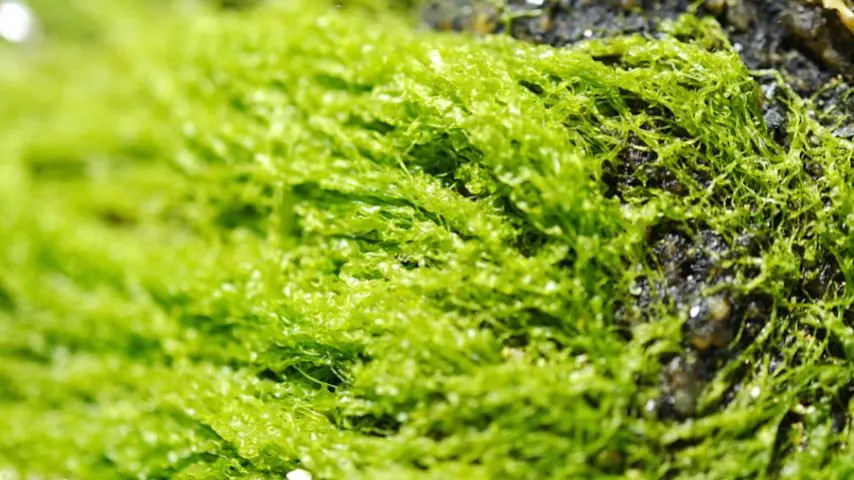
9 Most Common Causes Of Anthurium Root Rot
Let’s now see the most common causes for anthuriums to develop root rot.
1. Poor Drainage
Poor drainage is the most common cause of root rot. It’s because it makes the potting soil too compact. This will not allow for air pockets to form. The water is not well draining.
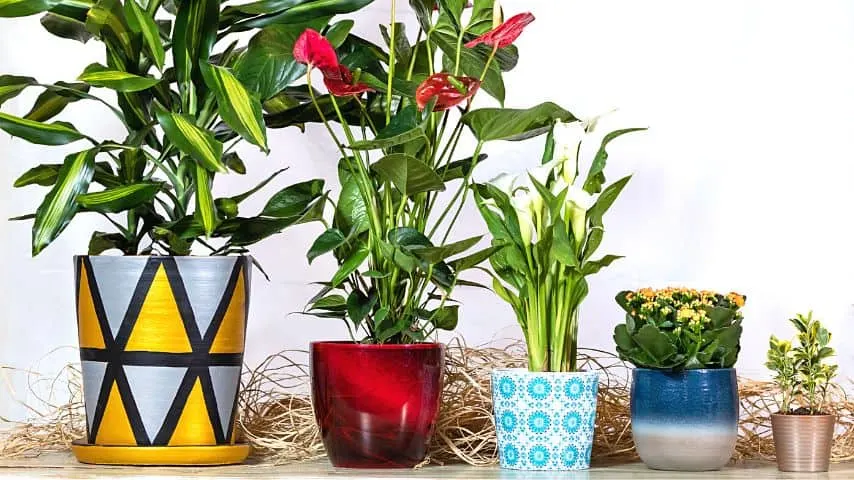
In addition, poor drainage is caused by no drainage holes. Any excess water needs to drain out of the pot during plant watering.
2. Overwatering And Root Rot
Overwatering leads to rot. Overwatering is caused by watering too often. Use your index finger and put it 1-2 inches (2.5-5 cm) into the soil. Once the soil’s nearly dry, you can now water the plant. Watering too much is rarely an issue if you use a proper aroid potting mix.
Tropical plants are used to heavy rainfall at once. But then the ventilation, an airy substrate, and drainage holes are essential indoors.
3. Pot Size
It is important to select the correct size of pot for your plants. A common beginner mistake is to choose a pot that is way too big.
When you repot your plant, only choose a pot one to two sizes bigger than the previous pot, because, with a pot too big, you will most likely end up with root rot.
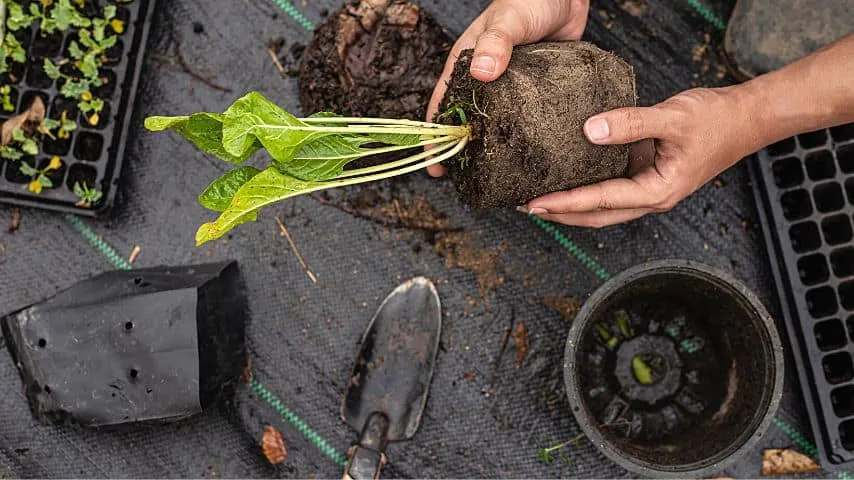
It isn’t easy to water a plant correctly in a big pot. It’s almost impossible to get the soil wet evenly.
Some parts will become too wet, and others will end up dry.
The reason is that your plant’s roots cannot expand throughout the pot.
So extra humidity will not be able to be taken in by your plant.
You will end up watering a lot because your plant will show you signs of insufficient hydration.
In addition, when you touch the soil, it will be extremely dry.
But what happens is that some parts will become very soggy. This wetness will lead to root rot.
4. Compact Soil Causes Rot in Anthuriums
A common cause for root rot is compact soil. If the soil is too compacted, water cannot drain through the soil out of the pot. The soil won’t become dry as there is almost no airflow to the roots and through the soil.
Therefore the roots stay constantly wet. Ensure with your index finger that your soil is well-draining by just gently putting your finger into the soil.
If you feel loose bits and not just a single clump of soil, your soil is airy.
5. No Drainage Holes in the Pot
Another problem is if your pot has no drainage holes. They are essential for houseplants in pots. The holes ensure that excess water is flowing out of the pot. So if you choose a pot, choose one with drainage.
You can use a plastic pot that has drainage holes, and then you can choose whatever outer pot you like.
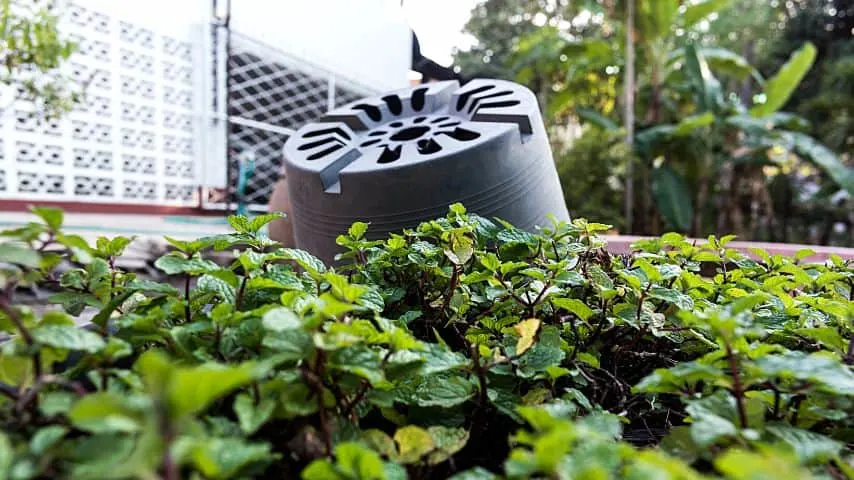
Never select a pot without any drainage because watering will be really difficult. It’s easy to overwater, and the water cannot go anywhere.
6. The Watering is not According to the Season
You should water most frequently in spring and summer. Spring and summer are the main growing seasons for plants.
Whether your plants are grown in the garden or indoors doesn’t matter. You must reduce the watering frequency in autumn and winter.
7. Temperature Issues
Temperature issues can also lead to root rot. Usually, the biggest problem is low temperatures in conjunction with wet soil.
It can become an issue if the temperature falls below 50 degrees Fahrenheit (10 degrees Celsius). If you water your plant, the water and the soil can become too cold. This combination can be detrimental to soil and plant health.
The best remedy, in this case, is to put your plants somewhere where the temperatures are above 50 degrees Fahrenheit. Don’t water your plant with cold water.
8. Bacterial and Fungal Diseases Cause Rot in Anthuriums
Bacterial and fungal infections are almost always involved when root rot starts in wet soil.
The rot starts below the soil, and once any signs above the soil are visible, the indoor plants’ health is already diminished, according to the University of Washington.
Different pathogens cause root rot, such as bacteria, fungi, viruses, and oomycetes.
In addition, some nematodes and parasites facilitate root rot.
Because the nematodes, as well as the parasites, wound the plant. It is then very easy for pathogens to enter the plant.
The worst are the fungi because fungi can over winter and stay in the soil for multiple years.
9. Fertilizer Burn
Plant roots can be damaged if you fertilize too strongly or too often. Fertilizer burn is a common result of overfertilizing.
When the roots are damaged, they are prone to bacterial and fungal infections.
How To Fix Anthurium Root Rot in 9 Steps
Step 1: Take the plant out of the pot
The first step in fixing root rot is to take the plant out of the pot. You can only inspect its roots if you take the Anthurium out of its pot.
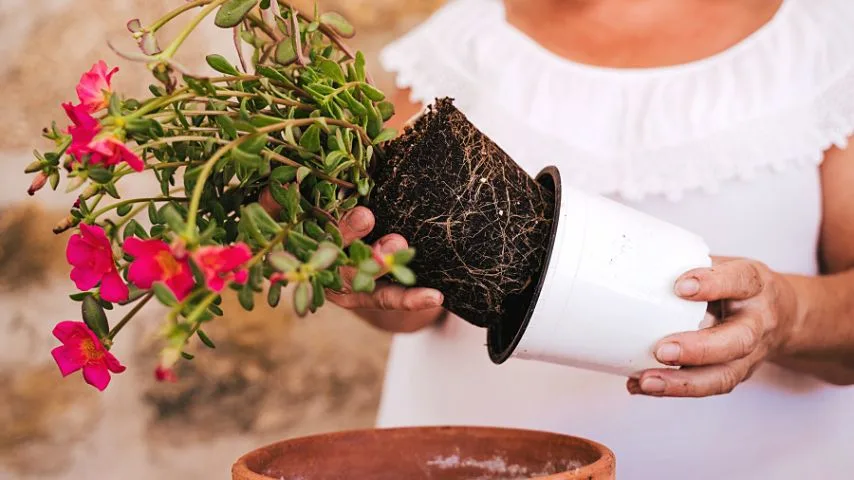
Step 2: Remove the potting soil
Remove the dirt on the plant’s root once you’ve taken it out of the pot. You must check on its roots. Do so.
Step 3: Check the roots
Inspect the roots. Healthy roots are mostly bright brown, white or red. If the roots have rotted, they usually turn dark brown to black.
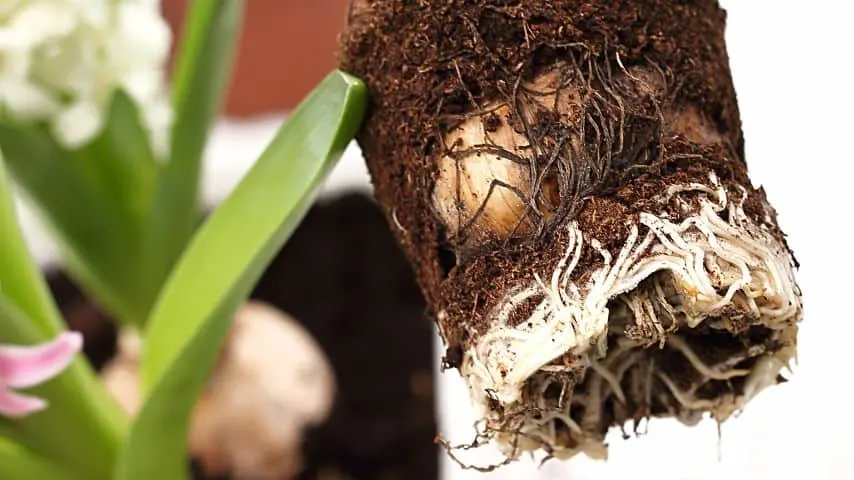
Touch the roots and ensure that they are still firm. If the roots are not firm but mushy to the touch and if the roots are falling off when you touch them, you have rotted.
Step 4: Remove the rotting roots
If you see discolored and mushy roots, you need to remove them.
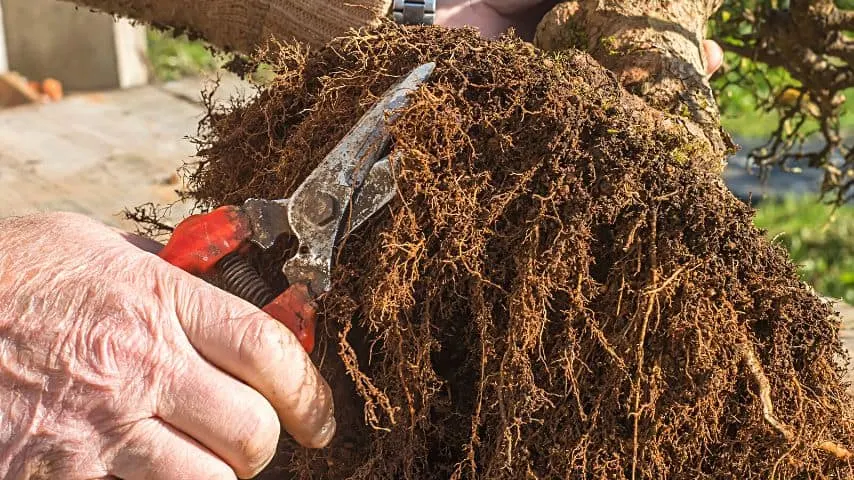
Prepare pruning scissors or a knife. Make sure that you are disinfecting the blades. Bacteria can build up on the blades.
You need to disinfect pruning shears, scissors, and knives before you make cuts on plants.
Then cut off all the mushy roots. Cut off the roots way above the mushy sections. This way, you can ensure that no mushy parts remain on the roots.
Step 5: Wash the roots
Now that you have removed all the mushy parts, it is time to wash all of the root ball.
Because bacteria can get onto the healthy roots. They will also develop root rot and will fall off.
So you must wash the roots thoroughly with lukewarm water. Tap water is absolutely fine.
Step 6: Exchange the potting soil
The bacteria that caused root rot are most likely also in the potting soil.
So you must discard all potting soil whenever you experience root rot. Throw away the old soil and prepare a new potting mix.
Ensure the new soil mix is well-draining. The chunky bits such as charcoal, orchid bark as well as perlite.
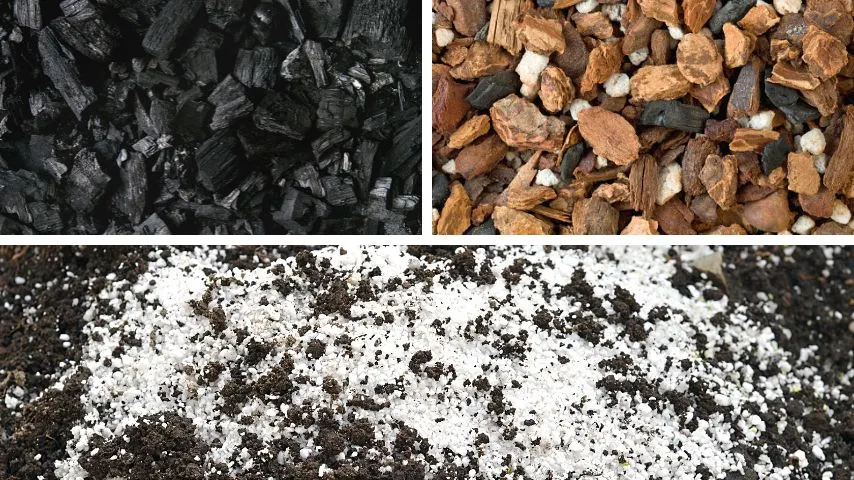
Air pockets need to be able to form in the soil. Because roots need oxygen. Air needs to be able to float through the soil and arrive at the roots.
This is only possible if air pockets can form and air can flow through the soil.
Step 7: Disinfect the pot
Now that you have prepared the right kind of soil, you also need to disinfect the pot. Because the bacteria can also amass in the pot.
Ensure that everything is completely clean. Get some rubbing alcohol as well as dishwasher soap. Clean both the pot’s inside and outside.
Rather discard the pot and get a new one if cleaning it is too difficult.
If the pot has no drainage holes, now is the time to buy a pot with drainage holes. In case it’s a plastic or a ceramic pot, you need to have a special drill to get holes into it.
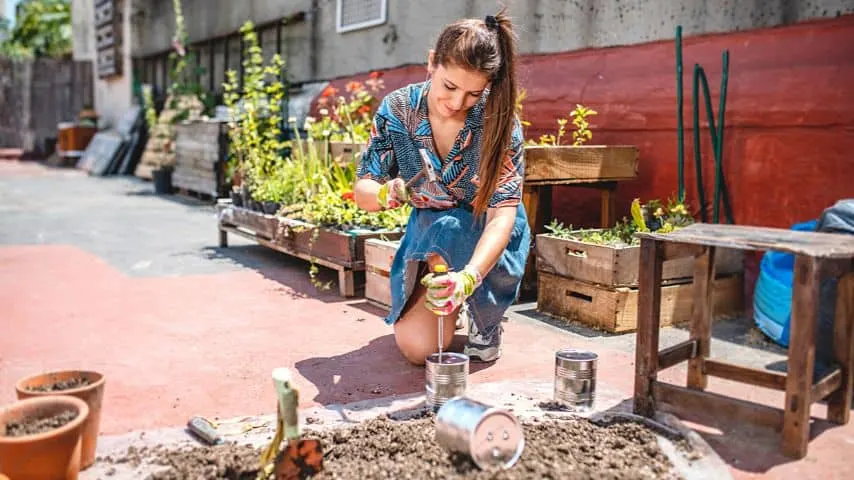
Step 8: Repot the plant
Now that we have prepared the pot and the new potting soil and cut off all the mushy roots and washed the root ball, we can put the plant back.
Take the pot and add some potting soil. Add some of the new fresh potting soil around the plant and the root ball. Lightly pat the soil around the plant.
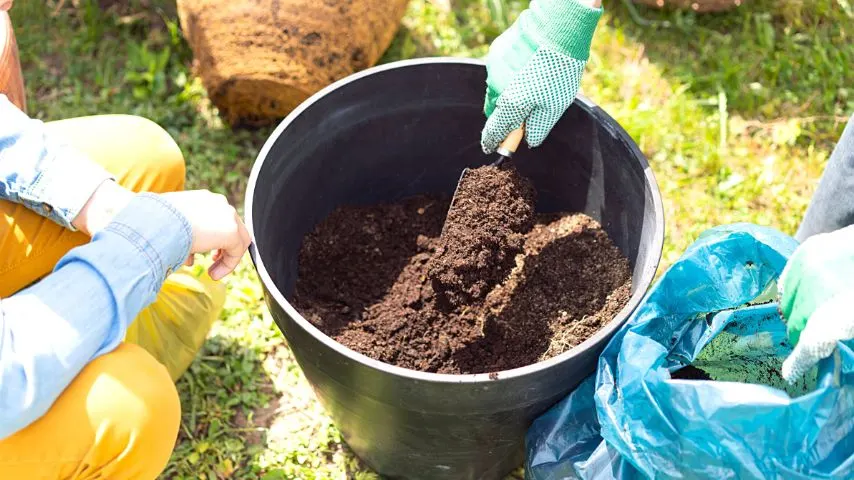
Make sure everything is tight and firm; ensure that the potting soil stays loose and well-draining.
Step 9: Make the conditions right
Now that you have your plant in the pot again, setting the conditions right for your plant is crucial.
Put it in an eastern or western-facing window. Ensure that the temperature is around 77-92°F (25-32°C).
The humidity should be 70-80%. Keep your aroid plant well away from drafty and cold Windows.
Make sure there are no heating units or radiators close to the plant.
Ensure that your plant has some airflow. This will help to dry up the soil quicker.
Check that nothing is clogging the drainage holes. Water needs to drain through the drainage holes quickly.
Check whenever you water that your plant is your plant’s soil is drying up considerably after about 2 to 3 days.
3 Tips How to Prevent Root Rot in Anthuriums
The good thing about root rot is that it is preventable. If you are choosing the correct soil that is well-draining. If you are not overwatering.
And if you adhere to a normal watering schedule. Water less frequently in autumn and winter. You can prevent root rot this way.
Further tips to prevent rotting roots.
1. Place your Plant in Bright Indirect Light
Place your plant into a bright spot with indirect light. An eastern or western-facing window is ideal. An eastern-facing window will get four to five hours of bright direct light in the morning and indirect light throughout the rest of the day. A west-facing window gets bright indirect light most of the day and some direct light when afternoon hits.
Anthuriums need bright light to thrive. In addition, light and warmth help to dry up the soil. The soil might stay wet for too long if the temperatures are very cold and there is insufficient light.
2. Repot in New Soil Every One to Two Years
Another important factor is to repot your plant frequently. About once every 1-2 years is ideal. Because after a while, the pot gets compacted.
There are a lot of roots growing over time, and if there is less and less soil and more and more roots, everything will be very compact.
In addition, drainage holes can also be clogged by aerial roots or dirt building up. Repotting is necessary once your plant is root or pot-bound.
Anthuriums do not like to be rootbound or potbound.
3. Inspect the Plant Regularly
Another thing to prevent root rot is to check your plant frequently. I usually do it once a week when I water most of my plants.
I quickly look at the foliage, the stem, and the potting soil. Is it still wet and soggy, or has it almost dried up?
If there are any issues this colored leaves, like yellow leaves or brown leaves, you need to find the reason for it and act accordingly.
How to Save Anthurium from Root Rot
The best things you can do to save an Anthurium from root rot are:
- Change your watering schedule
- Avoid fertilizer
- Move your plant into a spot with bright indirect light
- Change the pot to the appropriate size
- Add drainage holes
- Prune off infected roots
- Wash the roots
- Exchange the soil
- Disinfect the pot
- Use fungicide
- Repot every 1-2 years
- Adjust your care routine
Read more about my proven Anthurium care routine.
Stop Watering after Repotting
A common misconception I often read on the Internet is that you should water immediately after repotting a plant.
Unfortunately, this is not correct. Your plants are prone to root rot in that stage.
The reason is that whenever you repot a plant; you likely damage its roots.
Even the slightest cut or break is an open surface area where pathogens can enter the plant tissue.
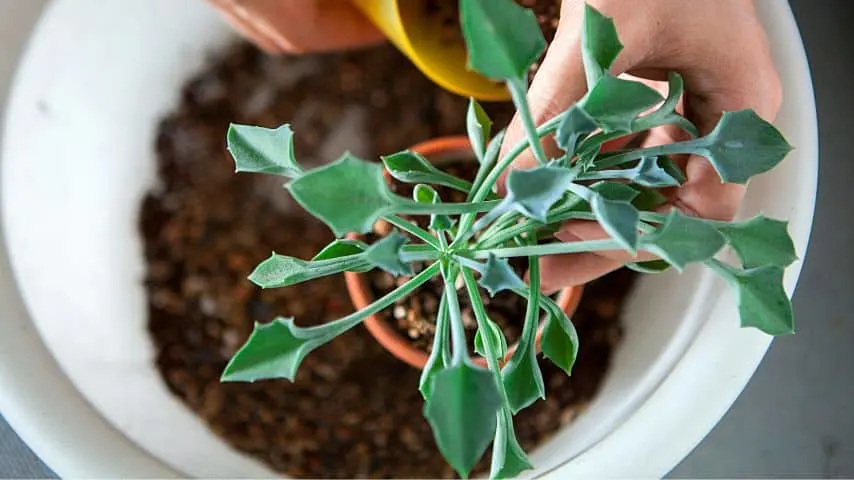
This is why I’m only watering my plants 12 to 24 hours after I have repotted them.
This gives your plant sufficient time to callous over the damaged areas. This way, the risk of rot is reduced.
Fungicide Against Anthurium Root Rot
Using a fungicide can also get rid of root rot. There are both organic and systemic forms of fungicides available.
You apply them to the plant or roots to kill the fungus.
Some organic fungicides you can use for your indoor plants:
Neem Oil
Neem oil is usually used as a preventive measure against plant pests. But it is also a disinfectant.
Neem oil derives from the neem tree. It has antimicrobial active ingredients. Some known antimicrobial properties are azadirachtin and nimbin.
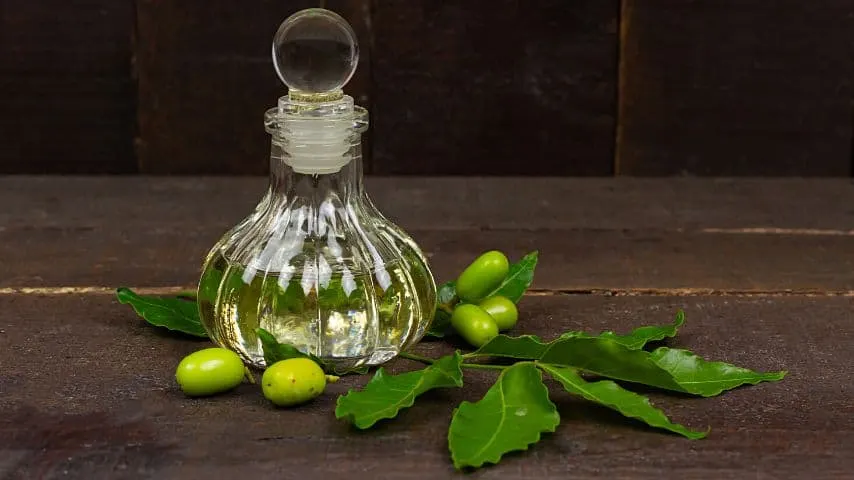
You can use the neem oil either on the stems and leaves of your plant, or you can drench the soil with it.
The fragrant helps to control fungal diseases such as root rot.
Hydrogen peroxide
H202, or hydrogen peroxide, is a chemical that can be used as a natural disinfectant.
But you have to make sure that you dilute it and that you are not using more than 3% hydrogen peroxide.
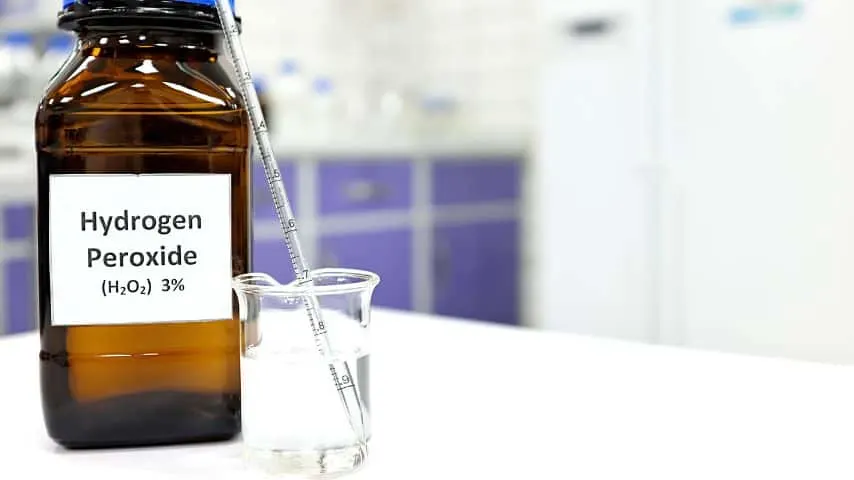
I dilute it in water and apply it to my plants whenever I’m propagating some cuttings in water.
I recently added some hydrogen peroxide to stop root rot on one of the cuttings I had in the water. It worked well.
Hydrogen peroxide can help to avoid fungus and bacteria building up.
Be careful as it can also cause plant tissue damage. Especially on plants that are sensitive to oxidizers.
Handle it carefully, as it causes skin irritation and is toxic when ingested.
Activated Charcoal
Activated charcoal or activated carbon can be used as a fungicide. I use it in all my aroid soil mixes because it is known to have antimicrobial properties.

It can also prevent bacterial and fungal growth of certain strains. I also use activated charcoal whenever I’m cutting a plant. Whenever I’m taking a cutting of a plant, I just put some activated charcoal onto the cut.
This seals off the wound and deters bacteria.
Baking soda (sodium bicarbonate)
Baking soda can also be a great fungicide against certain fungi strains. But it doesn’t work against all bacteria types. What it does is disrupt the cell membrane and also the pH balance. Doing this can kill off bacteria.
When baking soda, use one teaspoon with one quart of water (9 dl). Add some dishwasher soap as well.
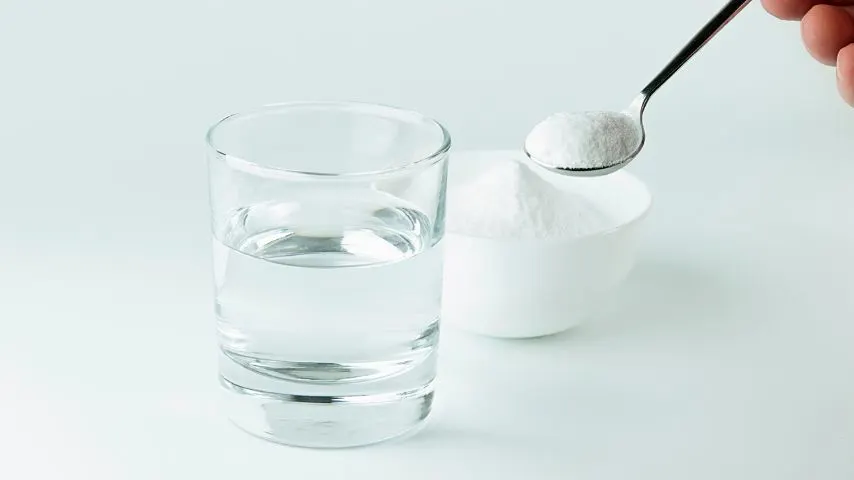
Mix everything and use it in a spray bottle. You can then apply it to your plant or soil. But don’t overdo it.
Baking soda can also harm your plants if excessive amounts are used.
Mycorrhizal fungi
This type of fungi builds a symbiotic relationship with the roots.
What’s great about this fungus is that it can aid in preventing diseases and pests. It also takes up water and nutrients from the soil. This fungus cannot counter root rot but can help prevent root rot.
Because it absorbs excess water and nutrients from the soil. The soil is less likely to be salty entrenched and course rot on the roots.
Cinnamon
Cinnamon is proven to possess antimicrobial properties. But it might not help against all types of root rot fungus. I use cinnamon on cuttings and the mother plant’s wounds.
Cinnamon can also be used as a growth hormone for root growth stimulation.
Frequently Asked Questions
What is root rot?
Root rot is when roots become mushy and soft and eventually fall off. It is caused by overwatering and dense soil.
How will I know if my Anthurium’s experiencing root rot?
If the soil of your Anthurium stays wet and soggy for a prolonged time and leaves start to turn yellow, you most likely have root rot.
Can Anthuriums recover from root rot?
Anthuriums can recover from root rot. But for this to happen, you must quickly spot the signs of root rot. Act fast once you have identified rot.
Should I water if my Anthurium has rot?
Don’t water your Anthurium when it has rotted. The reason for rot is most likely wet and soggy soil. You should never water your plant if the soil is still wet. Remove your plant and exchange the soil. Cut off the rotten roots. Disinfect its pot and use fresh potting soil. Then water again.
Conclusion Signs of Anthurium Root Rot
The worst signs of Anthurium root rot are mushy brown roots, yellow leave, and soggy and smelly soil.

Daniel has been a plant enthusiast for over 20 years. He owns hundreds of houseplants and prepares for the chili growing seasons yearly with great anticipation. His favorite plants are plant species in the Araceae family, such as Monstera, Philodendron, and Anthurium. He also loves gardening and is growing hot peppers, tomatoes, and many more vegetables.

